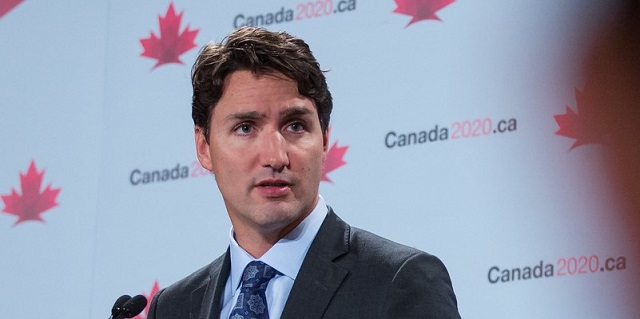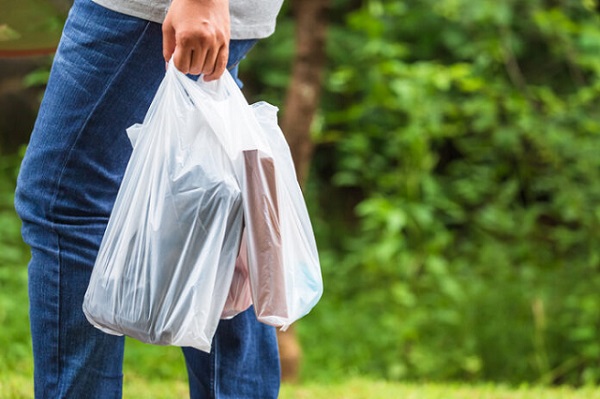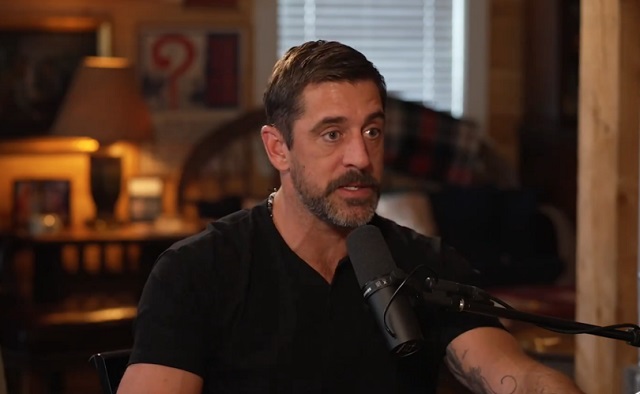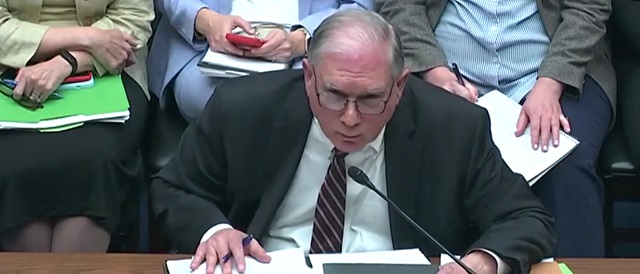Fraser Institute
Ottawa’s health-care deal cements failed status quo in Canada

From the Fraser Institute
By Mackenzie Moir and Jake Fuss
Canada will reach a projected $244.1 billion in 2023, which translates to $6,205 per person—nearly double the level of per-person spending (inflation-adjusted) three decades ago. And yet, last year Canadians endured the longest median wait time (27.7 weeks) ever recorded for non-emergency surgery.
Last week, as part of Ottawa’s promised $46 billion in additional health-care spending, the Trudeau government agreed to increase Quebec’s share of federal health-care dollars by $900 million annually. Quebec was the last province to reach an agreement with Ottawa before the March 31 deadline. With the closure of this agreement, Canadian taxpayers are on the hook for more health-care spending than ever before. For the same old broken health-care system.
Of course, it ultimately doesn’t matter whether the $46 billion originates from Ottawa or the provinces. In the end, Canadian taxpayers foot the bill. And what do we get in return for our health-care dollars?
In 2021, the latest year of comparable data, Canada’s total health-care spending (as a percentage of the economy) was the highest among 29 other comparable countries with universal health care (after adjusting for differences in population age). This isn’t a new development. Canada has a long history of having one of most expensive systems among high-income universal health-care countries.
Despite this, according to the latest comparable data, Canada ranks among the poorest performing universal health-care countries in key areas such as the number of physicians, hospital beds and diagnostic technology (e.g. MRI machines). Further, according to the Commonwealth Fund, in 2020 Canada ranked dead last on timely access to specialist consultations and non-emergency surgery.
Meanwhile, public health-care spending in Canada will reach a projected $244.1 billion in 2023, which translates to $6,205 per person—nearly double the level of per-person spending (inflation-adjusted) three decades ago. And yet, last year Canadians endured the longest median wait time (27.7 weeks) ever recorded for non-emergency surgery.
In short, Canada’s health-care system is in shambles, but the answer does not lie in simply throwing more money in its general direction. Federal politicians should instead look to the example of welfare reform during the Chrétien era in the 1990s. Those reforms, which reduced federal transfers to provinces and eliminated most of the “strings” attached to federal funding, resulted in increased provincial autonomy, greater policy experimentation, fewer Canadians needing welfare and savings for the federal government (i.e. taxpayers).
This is the opposite of today’s approach to health care, where the existing vehicle for federal funding (the Canada Health Transfer) is connected to the Canada Health Act (CHA), which prevents provincial governments from innovating and experimenting in health care by threatening financial penalties for non-compliance with often vaguely defined federal preferences. The result is a stalemate that satisfies no one and ensures that Canada’s policies remain at odds with the policies of our better-performing universal health-care peers.
While new federal dollars for health care are undoubtedly appealing to premiers, they will not improve the state of health care for Canadians. Until our federal politicians have the courage to reform the CHA and follow the example of 1990s welfare reform to improve outcomes, our health-care system’s unacceptable status quo will continue.
Authors:
Economy
Prime minister’s misleading capital gains video misses the point

From the Fraser Institute
By Jake Fuss and Alex Whalen
According to a 2021 study published by the Fraser Institute, 38.4 per cent of those who paid capital gains taxes in Canada earned less than $100,000 per year, and 18.3 per cent earned less than $50,000. Yet in his video, Prime Minister Trudeau claims that his capital gains tax hike will affect only the richest “0.13 per cent of Canadians”
This week, Prime Minister Trudeau released a video about his government’s decision to increase capital gains taxes. Unfortunately, he made several misleading claims while failing to acknowledge the harmful effects this tax increase will have on a broad swath of Canadians.
Right now, individuals and businesses who sell capital assets pay taxes on 50 per cent of the gain (based on their full marginal rate). Beginning on June 25, however, the Trudeau government will increase that share to 66.7 per cent for capital gains above $250,000. People with gains above that amount will again pay their full marginal rate, but now on two-thirds of the gain.
In the video, which you can view online, the prime minister claims that this tax increase will affect only the “very richest” people in Canada and will generate significant new revenue—$20 billion, according to him—to pay for social programs. But economic research and data on capital gains taxes reveal a different picture.
For starters, it simply isn’t true that capital gains taxes only affect the wealthy. Many Canadians who incur capital gains taxes, such as small business owners, may only do so once in their lifetimes.
For example, a plumber who makes $90,000 annually may choose to sell his business for $500,000 at retirement. In that year, the plumber’s income is exaggerated because it includes the capital gain rather than only his normal income. In fact, according to a 2021 study published by the Fraser Institute, 38.4 per cent of those who paid capital gains taxes in Canada earned less than $100,000 per year, and 18.3 per cent earned less than $50,000. Yet in his video, Prime Minister Trudeau claims that his capital gains tax hike will affect only the richest “0.13 per cent of Canadians” with an “average income of $1.4 million a year.”
But this is a misleading statement. Why? Because it creates a distorted view of who will pay these capital gains taxes. Many Canadians with modest annual incomes own businesses, second homes or stocks and could end up paying these higher taxes following a onetime sale where the appreciation of their asset equals at least $250,000.
Moreover, economic research finds that capital taxes remain among the most economically damaging forms of taxation precisely because they reduce the incentive to innovate and invest. By increasing them the government will deter investment in Canada and chase away capital at a time when we badly need it. Business investment, which is crucial to boost living standards and incomes for Canadians, is collapsing in Canada. This tax hike will make a bad economic situation worse.
Finally, as noted, in the video the prime minister claims that this tax increase will generate “almost $20 billion in new revenue.” But investors do not incur capital gains taxes until they sell an asset and realize a gain. A higher capital gains tax rate gives them an incentive to hold onto their investments, perhaps until the rate is reduced after a change in government. According to economists, this “lock-in” effect can stifle economic activity. The Trudeau government likely bases its “$20 billion” number on an assumption that investors will sell their assets sooner rather than later—perhaps before June 25, to take advantage of the old inclusion rate before it disappears (although because the government has not revealed exactly how the new rate will apply that seems less likely). Of course, if revenue from the tax hike does turn out to be less than anticipated, the government will incur larger budget deficits than planned and plunge us further into debt.
Contrary to Prime Minister Trudeau’s claims, raising capital gains taxes will not improve fairness. It’s bad for investment, the economy and the living standards of Canadians.
Authors:
Business
Ottawa should end war on plastics for sake of the environment

From the Fraser Institute
Here’s the shocker: Meng shows that for 15 out of the 16 uses, plastic products incur fewer GHG emissions than their alternatives…
For example, when you swap plastic grocery bags for paper, you get 80 per cent higher GHG emissions. Substituting plastic furniture for wood—50 per cent higher GHG emissions. Substitute plastic-based carpeting with wool—80 per cent higher GHG emissions.
It’s been known for years that efforts to ban plastic products—and encourage people to use alternatives such as paper, metal or glass—can backfire. By banning plastic waste and plastic products, governments lead consumers to switch to substitutes, but those substitutes, mainly bulkier and heavier paper-based products, mean more waste to manage.
Now a new study by Fanran Meng of the University of Sheffield drives the point home—plastic substitutes are not inherently better for the environment. Meng uses comprehensive life-cycle analysis to understand how plastic substitutes increase or decrease greenhouse gas (GHG) emissions by assessing the GHG emissions of 16 uses of plastics in five major plastic-using sectors: packaging, building and construction, automotive, textiles and consumer durables. These plastics, according to Meng, account for about 90 per cent of global plastic volume.
Here’s the shocker: Meng shows that for 15 out of the 16 uses, plastic products incur fewer GHG emissions than their alternatives. Read that again. When considering 90 per cent of global plastic use, alternatives to plastic lead to greater GHG emissions than the plastic products they displace. For example, when you swap plastic grocery bags for paper, you get 80 per cent higher GHG emissions. Substituting plastic furniture for wood—50 per cent higher GHG emissions. Substitute plastic-based carpeting with wool—80 per cent higher GHG emissions.
A few substitutions were GHG neutral, such as swapping plastic drinking cups and milk containers with paper alternatives. But overall, in the 13 uses where a plastic product has lower emissions than its non-plastic alternatives, the GHG emission impact is between 10 per cent and 90 per cent lower than the next-best alternatives.
Meng concludes that “Across most applications, simply switching from plastics to currently available non-plastic alternatives is not a viable solution for reducing GHG emissions. Therefore, care should be taken when formulating policies or interventions to reduce plastic demand that they result in the removal of the plastics from use rather than a switch to an alternative material” adding that “applying material substitution strategies to plastics never really makes sense.” Instead, Meng suggests that policies encouraging re-use of plastic products would more effectively reduce GHG emissions associated with plastics, which, globally, are responsible for 4.5 per cent of global emissions.
The Meng study should drive the last nail into the coffin of the war on plastics. This study shows that encouraging substitutes for plastic—a key element of the Trudeau government’s climate plan—will lead to higher GHG emissions than sticking with plastics, making it more difficult to achieve the government’s goal of making Canada a “net-zero” emitter of GHG by 2050.
Clearly, the Trudeau government should end its misguided campaign against plastic products, “single use” or otherwise. According to the evidence, plastic bans and substitution policies not only deprive Canadians of products they value (and in many cases, products that protect human health), they are bad for the environment and bad for the climate. The government should encourage Canadians to reuse their plastic products rather than replace them.
Author:
-

 COVID-192 days ago
COVID-192 days agoTucker Carlson and NFL star Aaron Rodgers discuss Bill Gates, COVID-19, US Deep State
-

 COVID-191 day ago
COVID-191 day agoTop Fauci Aide Allegedly Learned To Make ‘Smoking Gun’ Emails ‘Disappear,’ Testimony Reveals
-

 Brownstone Institute15 hours ago
Brownstone Institute15 hours agoMusk Wins Latest Censorship Battle in Australia
-

 Opinion2 hours ago
Opinion2 hours agoUK set to ban sex ed for young children amid parental backlash against LGBT indoctrination
-

 Economy2 days ago
Economy2 days agoPrime minister’s misleading capital gains video misses the point
-

 COVID-191 day ago
COVID-191 day agoThe Vials and the Damage Done: Canada’s National Microbiology Laboratory Scandal, Part II
-

 Brownstone Institute15 hours ago
Brownstone Institute15 hours agoEnough With These Dangerous Calculations
-

 COVID-195 hours ago
COVID-195 hours agoMalaysian doctor goes viral after apologizing for administering COVID shots











